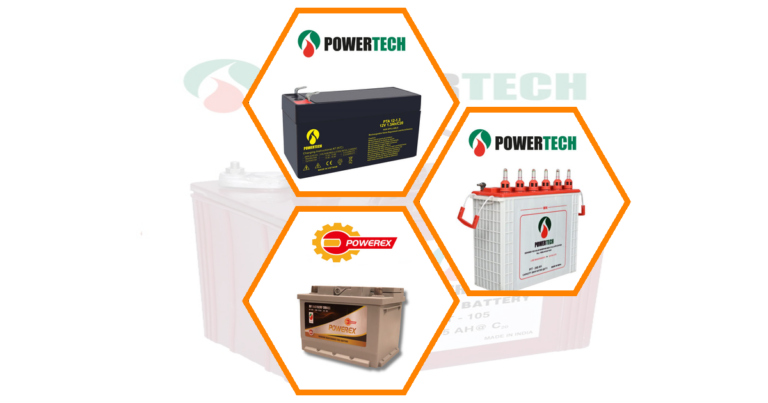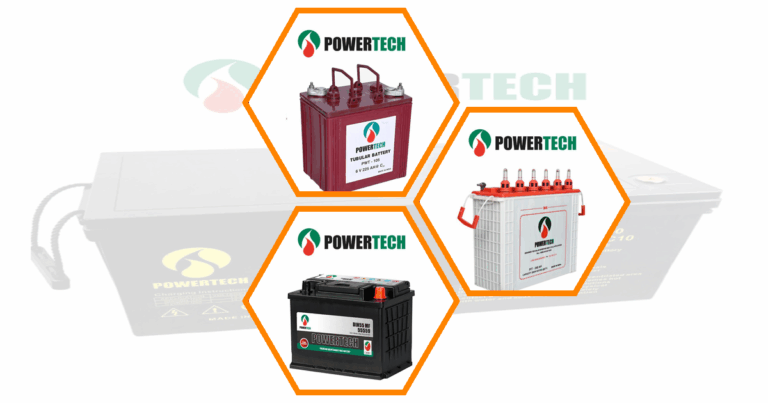What Is Battery Temperature Sensitivity
Wide Temperature Variations and Internal Battery Temperature
Batteries are sensitive to temperature changes, which can significantly impact their performance and lifespan. When exposed to wide temperature variations, the internal temperature of a battery can fluctuate, leading to potential damage. This is because extreme temperatures can cause the battery’s chemical reactions to accelerate or decelerate, affecting its efficiency and longevity.
- Extreme temperatures can lead to battery swelling or leakage.
- Internal temperature fluctuations can cause permanent damage to battery cells.
- Consistent temperature management is crucial for maintaining battery health.
Relationship Between Battery Capacity and Temperature
The capacity of a battery is directly influenced by the temperature it operates in. As temperatures rise, the battery’s capacity can decrease, leading to shorter usage times and more frequent charging. Conversely, cold temperatures can also reduce capacity, making it difficult for the battery to deliver the necessary power.
- Higher temperatures can reduce battery capacity by up to 50%.
- Cold temperatures can cause a significant drop in battery efficiency.
- Maintaining an optimal temperature range is essential for preserving battery capacity.
Common Factors Affecting Battery Capacity in Different Temperatures
Several factors can affect how temperature impacts battery capacity. These include the type of battery, its age, and the specific environmental conditions it is exposed to. Understanding these factors can help in managing battery performance effectively.
- Battery type (e.g., lithium-ion, nickel-metal hydride) affects temperature sensitivity.
- Older batteries are more susceptible to temperature-related capacity loss.
- Environmental conditions such as humidity and altitude can also play a role.
How Temperature Affects Lithium-Ion Battery Performance
Optimal Temperature Range for Lithium-Ion Batteries
Lithium-ion batteries perform best within a specific temperature range. This range ensures that the chemical reactions within the battery occur at an optimal rate, maximizing efficiency and lifespan. Typically, lithium-ion batteries operate best between 20°C and 25°C (68°F to 77°F).
- Operating outside the optimal range can lead to reduced battery life.
- Consistent temperature monitoring can help maintain performance.
- Manufacturers often provide guidelines for ideal operating temperatures.
Impact of Extreme Temperatures on Lithium Batteries
Extreme temperatures, whether hot or cold, can have a detrimental effect on lithium-ion batteries. High temperatures can accelerate degradation, while low temperatures can hinder the battery’s ability to deliver power.
- High temperatures can cause lithium-ion batteries to degrade five times faster.
- Cold temperatures can reduce the battery’s ability to hold a charge.
- Proper insulation and cooling systems can mitigate extreme temperature effects.
Battery Life Reduction at Higher Temperatures
When lithium-ion batteries are exposed to higher temperatures, their lifespan can be significantly reduced. This is due to the accelerated chemical reactions that occur at elevated temperatures, leading to faster wear and tear.
- Higher temperatures can lead to increased internal resistance.
- Battery life can decrease by up to 50% in extreme heat.
- Regular temperature checks can help prevent premature battery failure.
Best Practices for Maintaining Proper Battery Temperature
Monitoring Battery Temperature for Optimal Performance
Regularly monitoring the temperature of your battery is crucial for ensuring its optimal performance. This can be done using temperature sensors or monitoring systems that provide real-time data.
- Temperature sensors can alert users to potential overheating.
- Regular monitoring can prevent unexpected battery failures.
- Data from monitoring systems can inform maintenance decisions.
Temperature Management in Different Environments
Different environments present unique challenges for battery temperature management. Whether in a hot desert or a cold mountain, understanding how to manage battery temperature is key to maintaining performance.
- Use of cooling systems in hot environments can prevent overheating.
- Insulation can help maintain battery temperature in cold climates.
- Adapting to environmental conditions can extend battery life.
Importance of Charging Cycles and Voltage Control
Proper management of charging cycles and voltage is essential for maintaining battery temperature. Overcharging or undercharging can lead to temperature fluctuations that affect battery health.
- Avoid overcharging to prevent excessive heat generation.
- Maintain consistent voltage levels for optimal performance.
- Follow manufacturer guidelines for charging cycles.
Temperature Effects on Electric Vehicle Batteries
EV Battery Chemistry and Temperature Sensitivity
Electric vehicle (EV) batteries are particularly sensitive to temperature changes due to their complex chemistry. Understanding this sensitivity is crucial for maintaining EV performance and longevity.
- EV batteries are designed to operate within specific temperature ranges.
- Temperature fluctuations can affect the chemical stability of EV batteries.
- Advanced battery management systems can help regulate temperature.
Estimated Battery Life Based on Temperature
The lifespan of an EV battery can be estimated based on the temperatures it is exposed to. Consistently high or low temperatures can lead to a reduction in battery life, affecting the overall performance of the vehicle.
- High temperatures can reduce EV battery life by up to 50%.
- Cold temperatures can decrease the range of an electric vehicle.
- Regular temperature assessments can help predict battery lifespan.
Preventative Battery Testing for EVs
Regular testing of EV batteries can help identify potential temperature-related issues before they become serious problems. This preventative approach can save time and money in the long run.
- Testing can identify early signs of temperature-induced degradation.
- Preventative maintenance can extend the life of EV batteries.
- Regular testing can ensure optimal vehicle performance.
Prolonging Battery Lifespan Through Temperature Management
Minimizing Rapid Charging to Reduce Heat Generation
Rapid charging can generate excessive heat, which can be detrimental to battery health. By minimizing rapid charging, you can reduce heat generation and prolong battery lifespan.
- Rapid charging increases the risk of overheating.
- Slower charging methods can help maintain battery temperature.
- Following recommended charging practices can extend battery life.
Following Manufacturer Guidelines for Temperature Control
Manufacturers provide specific guidelines for temperature control to ensure the longevity of their batteries. Adhering to these guidelines can prevent temperature-related issues and extend battery life.
- Manufacturer guidelines often include optimal temperature ranges.
- Ignoring guidelines can lead to premature battery failure.
- Regularly reviewing guidelines can help maintain battery health.
Maintaining Moderate Temperatures for Optimal Battery Health
Keeping batteries at moderate temperatures is essential for their health and longevity. This involves using appropriate storage and usage practices to prevent exposure to extreme temperatures.
- Moderate temperatures prevent accelerated battery degradation.
- Proper storage can protect batteries from temperature extremes.
- Consistent temperature management can enhance battery performance.
The Role of Temperature in Battery Aging and Degradation
Key Indicators of Internal Battery Damage Due to Temperature
Temperature-related damage to batteries can manifest in several ways. Identifying these indicators early can help prevent further degradation and extend battery life.
- Swelling or leakage can indicate temperature-induced damage.
- Reduced capacity and efficiency are signs of internal damage.
- Regular inspections can help identify potential issues early.
Chemical Reactions Accelerated by High Temperatures
High temperatures can accelerate the chemical reactions within a battery, leading to faster aging and degradation. This can result in a shorter lifespan and reduced performance.
- Accelerated reactions can increase internal resistance.
- High temperatures can cause irreversible damage to battery cells.
- Consistent temperature management can slow down degradation.
Cold Temperature Effects on Battery Performance
Cold temperatures can significantly impact battery performance by reducing the battery’s ability to deliver power. This can lead to decreased efficiency and shorter usage times.
- Cold temperatures can increase internal resistance.
- Reduced power delivery can affect device performance.
- Proper insulation can help mitigate cold temperature effects.
Innovations in Battery Temperature Management
Advanced Cooling Systems for Electric Vehicle Batteries
Innovations in cooling systems are helping to manage the temperature of electric vehicle batteries more effectively. These systems are designed to prevent overheating and maintain optimal performance.
- Advanced cooling systems can regulate battery temperature in real-time.
- Improved cooling efficiency can extend the life of EV batteries.
- Ongoing research is leading to more effective cooling solutions.
Smart Battery Management Systems for Temperature Regulation
Smart battery management systems are becoming increasingly popular for their ability to regulate temperature and optimize battery performance. These systems use advanced algorithms to monitor and adjust temperature as needed.
- Smart systems can predict and prevent temperature-related issues.
- Real-time monitoring allows for proactive temperature management.
- Integration with other vehicle systems can enhance overall performance.
Future Developments in Temperature-Resistant Battery Technologies
Research and development in temperature-resistant battery technologies are paving the way for more durable and efficient batteries. These innovations aim to reduce the impact of temperature on battery life and performance. Battery recycling breakthroughs Scientists found new ways to take apart old batteries and reuse their parts to make new ones which helps save resources and reduce waste Automotive BMS importance Automotive BMS is crucial for keeping electric car batteries safe and making them last longer It helps manage the battery power so the car can run efficiently and go farther on a single charge
Car battery charging problems can happen when your car’s battery doesn’t get enough power to stay full This can make it hard to start your car or use things like lights and radio Vehicle power optimization helps cars use less fuel and go farther It makes engines work better so vehicles can be more efficient
- New materials are being developed to withstand extreme temperatures.
- Temperature-resistant technologies can enhance battery longevity.
- Continued innovation is expected to lead to more resilient batteries.
How can I extend my battery’s lifespan in extreme temperatures?
To extend your battery’s lifespan in extreme temperatures, it’s important to maintain a consistent temperature range. This can be achieved through proper storage, regular monitoring, and adherence to manufacturer guidelines.
Using cooling systems in hot environments and insulation in cold climates can help protect your battery. Additionally, avoiding rapid charging and following recommended charging practices can reduce heat generation and prolong battery life.
Economic Impact of Temperature-Related Battery Issues
Cost Implications of Premature Battery Replacement
Premature battery replacement due to temperature-related issues can have significant cost implications. Understanding these costs can help in making informed decisions about battery management.
- Replacing batteries prematurely can be expensive.
- Proper temperature management can reduce replacement frequency.
- Long-term savings can be achieved through effective battery care.
Energy Efficiency Losses Due to Temperature Fluctuations
Temperature fluctuations can lead to energy efficiency losses, affecting the overall performance of devices and vehicles. Managing these fluctuations is crucial for maintaining efficiency.
- Energy losses can result in higher operational costs.
- Consistent temperature management can improve energy efficiency.
- Monitoring systems can help identify and address efficiency losses.
Long-Term Savings Through Proper Temperature Management
Investing in proper temperature management can lead to long-term savings by extending battery life and improving performance. This involves using advanced technologies and following best practices.
- Long-term savings can offset initial investment costs.
- Improved battery performance can enhance device efficiency.
- Regular maintenance and monitoring can maximize savings.
FAQ’s
What is the ideal temperature range for battery storage?
The ideal temperature range for battery storage is typically between 20°C and 25°C (68°F to 77°F). Storing batteries within this range helps maintain their chemical stability and prevents premature degradation.
Extreme temperatures, whether hot or cold, can lead to reduced battery life and performance. Proper storage practices, such as using insulated containers, can help maintain the ideal temperature range and extend battery lifespan.
How does temperature affect battery life?
Temperature has a significant impact on battery life. High temperatures can accelerate chemical reactions within the battery, leading to faster degradation and reduced lifespan. Conversely, low temperatures can hinder the battery’s ability to deliver power, affecting its performance.
Maintaining an optimal temperature range is crucial for preserving battery life. Regular monitoring and adherence to manufacturer guidelines can help mitigate temperature-related issues. Proper temperature management can extend the lifespan of batteries and ensure consistent performance.






